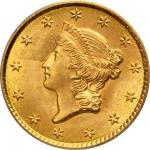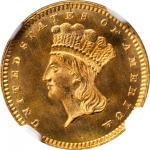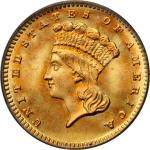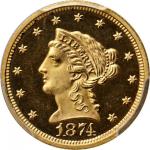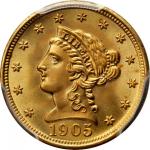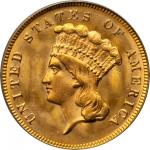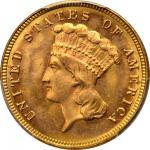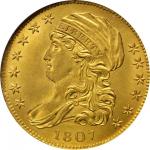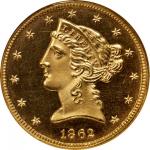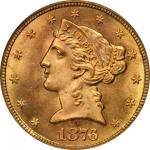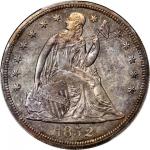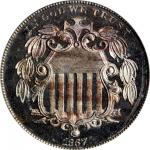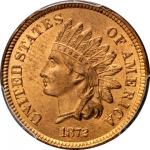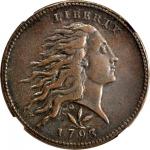The Peace silver dollar of 1921 to 1935 was born out of the horrors of World War I. So great was the slaughter brought about by trench warfare, poison gas, aerial bombing, unrestricted submarine warfare and other aspects of the Great War that following the conflict s end on November 11, 1918, there was widespread sentiment in the United States for the federal government to issue a coin commemorating the return of peace. Early in the formal process that led to the creation of this coin, when coin dealer and promoter Farran Zerbe submitted a letter to the American Numismatic Association (ANA) convention in August 1920, although the idea had already been put forth (not mentioned by Zerbe) that the new peace coin should be a silver dollar. In Zerbe s words:"Our peace coin should be one of good size for best art effects, and if it be one for popular use by all the people, the half dollar is naturally suggested and would probably be a common choice. But, should we resume the coinage of the silver dollar, that coin should be a consideration."We melted our silver dollars, over 250 million of them, to aid our allies in the war, under an act of Congress that provides for their replacement. Silver is now being purchased for the purpose and will continue to be purchased as long as the prices of silver will permit, 207 million ounces being required."The Congressional legislation to which Zerbe refers is the Pittman Act of 1918. Under its terms not only did the federal government melt 270,232,722 silver dollars, but it was instructed to replace them using newly mined silver from American mines. A sharp rise in the price of silver at the end of World War I prevented the federal government from acquiring the necessary silver immediately, but by May 1920 the price had fallen to a level where purchases could begin, as Zerbe recognized a few months later when drafting his letter. The stage was thereby set for the creation and production of the Peace silver dollar.The basic story of how the Peace dollar came into being is well known to most numismatists. The details of the story are expertly recounted by Roger W. Burdette in his 2005 book Renaissance of American Coinage: 1916-1921. For the purposes of this presentation, we pick up the story when the Commission of Fine Arts, meeting at the New York City studio of artist James Earle Fraser on December 13, 1921, selected the design entries of Anthony de Francisci. A 34-year old sculptor living in New York City, de Francisci chose as his obverse design a portrait of Liberty modeled after his wife Teresa, while the reverse displayed a majestic bald eagle perched on a mountaintop gazing over a new dawn of peace. Public outcry over the addition of a broken sword to the reverse design forced its removal shortly thereafter. That was done by Chief Engraver George T. Morgan at the Philadelphia Mint directly on the existing reverse hub rather than by the time-consuming process of cutting a new hub. Simultaneously Morgan also made several other alterations to the reverse design, not the first time that he would do so for both the obverse and reverse designs of the Peace dollar. With an approved design, the Mint set about preparing high relief hubs, master dies, and eventually working dies for use by the coining department to actually strike the coins. As it was already very late in the year production had to commence immediately and proceed quickly in order to get at least some examples of the new silver dollar struck before the end of 1921. There was no time for the Mint to test the high relief design in a simulated circulation strike press run. Even so, the Mint managed to produce 1,006,473 circulation strike 1921 Peace dollars in just four days from December 28 to 31. Concurrent with circulation strike production, the Mint struck sandblast and satin Proofs, the dies for which were made from the same hubs but of higher quality. The Proofs were also struck on the Mint s medal press to maximize the detail on the coins. While the coining department concentrated on producing the circulation strike 1921 coins, Chief Engraver Morgan, anticipating a continuation of Peace dollar production using the high relief design, prepared new 1922-dated hubs for this purpose. Roger Burdette provides the details: "....while the coining department was busy, Morgan created new 1922-dated high relief hubs similar to the 1921 s in anticipation of continuing the high relief design in 1922. He took a 1921-dated hub and changed the date to 1922. Changes were also made to rays and hair, the lettering was narrowed and made more rounded, the outline of the portrait was strengthened, and all the A s were made slant-topped on the reverse. The reverse hub was slightly damaged above the eagle s right talon during alteration. This version was used to create the master dies from which were struck the 1922 high relief proofs. Overall, these 1922 proofs -- Morgan s touched-up version -- may be the best rendition of the Peace dollar to leave the mint: they had sharp lettering, detailed modeling [sic] of the hair and good delineation of the eagle. These were likely first made during the last week of December but almost certainly before January 8, 1922."Morgan s work, however, proved premature as striking of the 1921 coins for circulation resulted in sudden and rapid die failure, usually after only about 25,000 coins were struck. In contrast, the dies used to strike Morgan silver dollars had averaged 250,000 coins per die. Additionally, regular issue production of coins for circulation required that each coin receive only one blow from the dies. This single impression was insufficient to bring up all aspects of the high relief design, with most of the circulation strike 1921 coins softly defined with little to no detail over and around the central high points. Even the Proof 1921 coins are not completely full in the centers. Clearly something had to be done to improve the striking characteristics of the Peace dollar design. Chief Engraver Morgan s solution was a series of relief-reducing modifications to the basic Peace dollar design that would ultimately result in the low relief production variant of 1922 to 1935. While the final design served the purposes of the Mint -- whose primary job was to produce coins for commercial use -- it sacrificed much of the artistic qualities and sheer beauty of the original high relief design. As Burdette opines and we also believes, the Peace dollar design is seen to its fullest and most perfect extent in coin form only on the high relief Proofs of 1922. These coins, in fact, constitute a unique design from the earliest days of the Peace dollar, being different even than the 35,401 circulation strike high relief 1922 coins that the Mint struck for die testing purposes. Those coins feature a slightly refined version of the obverse used to strike the Proof 1922 high relief pieces, but the reverse is of the 1921 high relief type (i.e., not the same reverse used on the Proof 1922 high relief coins). In addition to being arguably the most expertly produced and artistically advanced Peace dollar, the Proof 1922 high relief is eagerly sought by advanced collectors for its rarity. The original mintage is unknown since, not being part of a regular issue, the Mint did not keep records on the number struck. Undoubtedly very few were made, the coins being intended solely for distribution to influential politicians, Mint and Treasury Department officials, and others intimately involved in the creation and evolution of the Peace dollar design. The coins were not made available to the general public. All Proof 1922 high relief Peace dollars were produced in the same manner, struck multiple times on the Mint s medal press to bring up even the most intricate elements of the design. Once struck the coins were sandblasted in the Mint, this type of finish being popular at the time in production of high quality medallic and coinage works of art. These coins are often referred to as "Matte Proofs," or being of a "matte finish," although they are more accurately described as Sand Blast Proofs in keeping with the method of manufacture. We have been able to positively trace only 11 Proof 1922 high relief Peace silver dollars, as follows: 1 - PCGS Proof-67. Ex Raymond T. Baker, director of the United States Mint, 1917 to 1922; Ira & Larry Goldberg s Pre-Long Beach Auction of June 2014, lot 1344. 2 - NGC Proof-67. Ex Philadelphia estate, possibly obtained directly from the Philadelphia Mint in 1922; Paramount s session of Auction 85, July 1985, lot 1277; Superior s October Sale of 1990, lot 3835; The Knoxville Collection; Heritage s Baltimore, MD Signature Sale of July 2003, lot 9054; Heritage s sale of the Greensboro Collection, January 2014, lot 5347. 3 - PCGS Proof-66. Ex our (Bowers and Merena s) Frontenac Sale, November 1991, lot 2249; our (Bowers and Merena s) sale of the Long Beach Connoisseur Collection, August 1999, lot 300; Ira & Larry Goldberg s Benson Collection sale, February 2001, part of lot 2245; Ira & Larry Goldberg s Pre-Long Beach Auction of January 2004, lot 2841. The present example , and pictured on pages 219, 263 and 273 in the 2005 book Renaissance of American Coinage: 1916-1921 by Roger W. Burdette, and on page 170 in the 2008 book A Guide Book of Peace Dollars by Roger W. Burdette. 4 - PCGS Proof-66. Ex B. Max Mehl, sold to the following on April 28, 1937; Ambassador and Mrs. R. Henry Norweb; our (Bowers and Merena s) sale of the Norweb Collection, Part III, November 1988, lot 3931; Connecticut collection; Heritage s sale of the Morris Silverman Collection, April 2002, lot 4354; The Driftwood PCGS Registry Set of Peace Dollars with Proofs. The plate coin on page 2763 of the 1993 book Silver Dollars & Trade Dollars of the United States: A Complete Encyclopedia, Volume Two , by Q. David Bowers.5 - NGC Proof-66. Ex Heritage s sale of the Robert Moreno Registry Collection of Peace Dollars, April 2006, lot 1240; Heritage s sale of the Joseph C. Thomas Collection, April 2009, lot 2658. 6 - NGC Proof-66. Ex RARCOA s session of Auction 84, July 1984, lot 1793; Mid-American s FUN Sale of January 1986, lot 354; Superior s session of Auction 88, July 1988, lot 273; Julian Leidman; R. Tettenhort Collection; our (Bowers and Merena s) The Cabinets of Craig M. Morgan, M.D., Stephen C. Leckar and the Columbia and Time Capsule Collections sale, November 1998, lot 540; Superior s ANA 2000 National Money Show Auction of March 2000, lot 575; The Peace Man NGC Registry Set. 7 - PCGS Proof-64. Ex our (Bowers and Merena s) Lindesmith Collection sale, March 2000, lot 2217; Superior s ANA National Money Show Auction of March 2001, lot 407. 8 - "Choice Matte Proof."; Ex the Donald L. Rhodes auction of April 1959, lot 945; Lewis Moorman; Moorman estate/Grace A. Moorman; Walter Breen, on behalf of Lester Merkin at New Netherlands Coin Company; our (Stack s) sale of the Robert W. Barker Collection, October 1986, lot 113. The plate coin on page 220 in the 1977 and 1989 editions of the book Walter Breen s Encyclopedia of United States and Colonial Proof Coins , and on page 461 of the 1988 book Walter Breen s Complete Encyclopedia of U.S. and Colonial Coins . 9 - Proof-60. Ex Cornerstone of Michigan government building, discovered when the coin was demolished; Gene Christian and Mike Golonka; Bruce Todd; RARCOA s FUN Convention Sale of January 1973, lot 789; Mike Golonka; Idaho collection. 10 - Proof-60. Ex Farran Zerbe (?); Chase National Bank (New York City); Chase-Manhattan Bank Money Museum Collection; National Numismatic Collection in the Smithsonian Institution. 11 - PCGS Proof-25. Ex Ernest Lush, who discovered the coin in Lathrup Village, Michigan in the late 1970s; Michigan collection; RARCOA s session of Auction 83, July 1983, lot 1295; Gwyn Houston; Julian Leidman (on consignment at the 1992 ANA Convention); our (Bowers and Merena s) Rarities Sale of August 1995, lot 208; Heritage s CSNS Signature Sale of April 2002, lot 6536; our (Stack s) Orlando Sale of January 2007, lot 979.This coin was once thought to be a circulation strike 1922 high relief Peace dollar from the 35,401-piece die testing run, but the reverse die diagnostics confirm that it is a Proof 1922 high relief that was accidentally or intentionally placed into circulation, or was used as a pocket piece.Ranking within the top half of the census of known examples of this historically significant issue, this remarkable premium Gem looms large among our silver dollar offerings of recent years. In keeping with the extra care that Morgan put into preparing this design, as well as the great care that went into the striking of these Proof 1922 high relief coins, both sides exhibit razor sharp definition that extends to even the most intricate design elements in the centers. The surfaces are bright pewter gray with the tiny sparkling facets that comprise the sandblast finish discernible with the aid of a loupe. Both sides are virtually pristine, as one should expect at the Proof-66 grade level, and a tiny swirl of slightly deeper color in the reverse field below the letter E in E PLURIBUS UNUM is mentioned solely as a provenance marker. An outstanding example of this classic 20th century Proof rarity, this coin is destined to serve as a prized and cherished highlight in a world-renowned collection.,<strong style="line-height:1.5;">Provenance: Ex our (Bowers and Merena s) Frontenac Sale, November 1991, lot 2249; our (Bowers and Merena s) sale of the Long Beach Connoisseur Collection, August 1999, lot 300; Ira & Larry Goldberg s Benson Collection sale, February 2001, part of lot 2245; Ira & Larry Goldberg s Pre-Long Beach Auction of January 2004, lot 2841. Pictured on pages 219, 263 and 273 in the 2005 book <em style="line-height:1.5;">Renaissance of American Coinage: 1916-1921 by Roger W. Burdette, and on page 170 in the 2008 book <em style="line-height:1.5;">A Guide Book of Peace Dollars by Roger W. Burdette.<strong style="line-height:1.5;">Est. $250,000-$300,000

